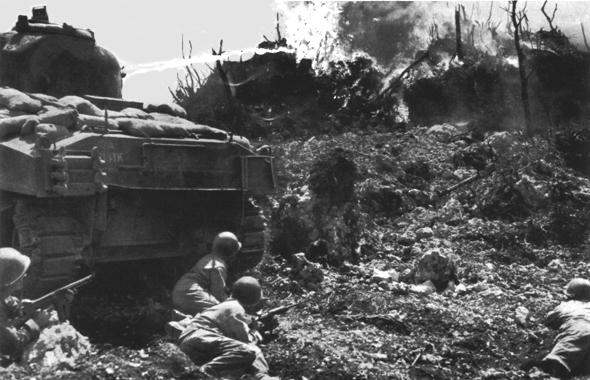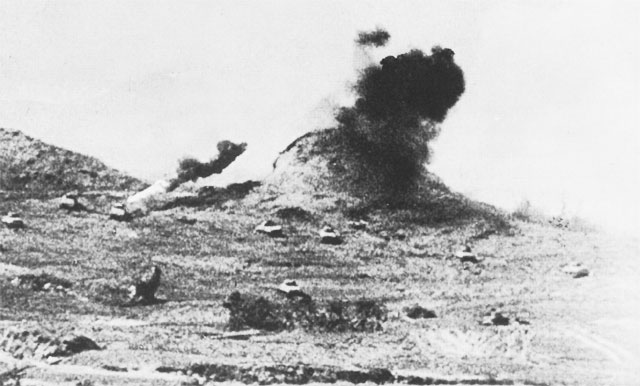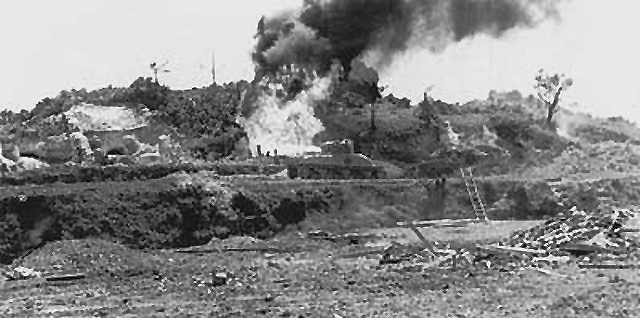On Okinawa, after the fall of Shuri Castle, General Mushijima orders the Japanese troops to withdraw southward, towards the Oroku peninsula and the hills of Yaeju, Yuza and Mezado in the extreme south of the island. There are reports of discontent among the Japanese troops, something previously unheard of in the Imperial Army.
Elements of the US 1st Marine Division cross the Koruba river, south of Naha.
The forces of the US Army 24th Corps pursue the retreating Japanese while elements mop up around Shuri.

TANK-INFANTRY ATTACKS marked the battle for the escarpment. An armored flame thrower of the 713th Tank Battalion, protected by infantry against enemy satchel-charge attacks, sprays flame over a knob on the crest of the escarpment
Okinawa Campaign Background — The Medium Tank Shortage
Up until this point in the Central Pacific Theater of the Pacific War, the Japanese had only put up scattered 37mm anti-tank guns and 37mm armed Type 95 light light tanks against American M3 Stuart light tanks and M3 Grant and M4 Sherman Medium tanks.
These operations were small in terms of tanks used and taught US Army Central Pacific tank unit commanders some very bad habits in terms of operating without close infantry support. This became apparent with the veteran 193rd Tank Battalion supporting the 27th Division at Kakazu on 19 April 1945. The 193rd lost 22 of 30 tanks engaged along with it’s battalion commander.



